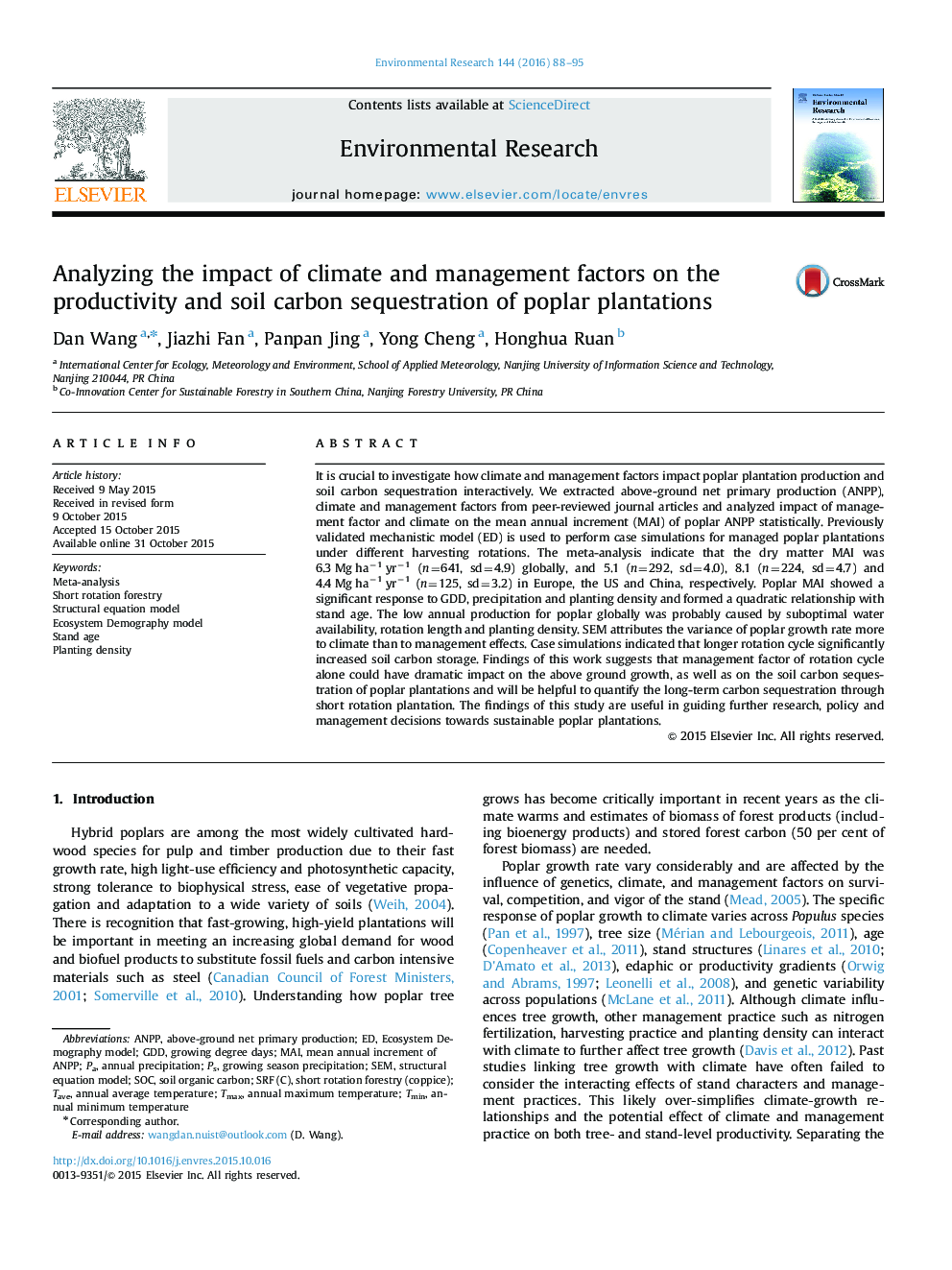| Article ID | Journal | Published Year | Pages | File Type |
|---|---|---|---|---|
| 4469647 | Environmental Research | 2016 | 8 Pages |
•A comprehensive dataset and meta-analysis•A structural equation modelling approach•Case simulations using mechanic Ecological Demography model.
It is crucial to investigate how climate and management factors impact poplar plantation production and soil carbon sequestration interactively. We extracted above-ground net primary production (ANPP), climate and management factors from peer-reviewed journal articles and analyzed impact of management factor and climate on the mean annual increment (MAI) of poplar ANPP statistically. Previously validated mechanistic model (ED) is used to perform case simulations for managed poplar plantations under different harvesting rotations. The meta-analysis indicate that the dry matter MAI was 6.3 Mg ha−1 yr−1 (n=641, sd=4.9) globally, and 5.1 (n=292, sd=4.0), 8.1 (n=224, sd=4.7) and 4.4 Mg ha−1 yr−1 (n=125, sd=3.2) in Europe, the US and China, respectively. Poplar MAI showed a significant response to GDD, precipitation and planting density and formed a quadratic relationship with stand age. The low annual production for poplar globally was probably caused by suboptimal water availability, rotation length and planting density. SEM attributes the variance of poplar growth rate more to climate than to management effects. Case simulations indicated that longer rotation cycle significantly increased soil carbon storage. Findings of this work suggests that management factor of rotation cycle alone could have dramatic impact on the above ground growth, as well as on the soil carbon sequestration of poplar plantations and will be helpful to quantify the long-term carbon sequestration through short rotation plantation. The findings of this study are useful in guiding further research, policy and management decisions towards sustainable poplar plantations.
